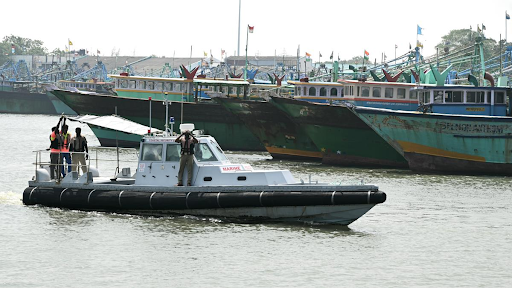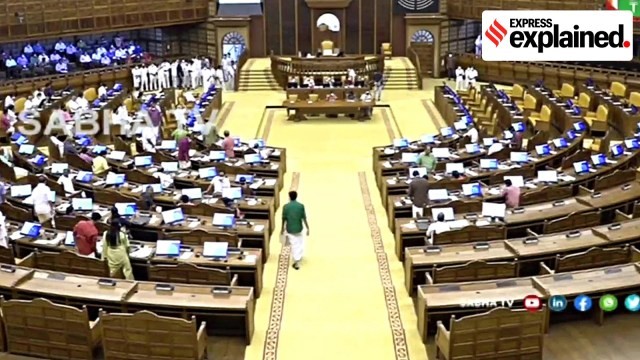Description

Source: The Hindu
Disclaimer: Copyright infringement not intended.
Context:
- On July 8, five Army soldiers were killed and five injured as two Army vehicles were ambushed by militants on a hilly tract in the Kathua district of Jammu and Kashmir.
Details:
Introduction:
In recent years, the Jammu region of the Union Territory of Jammu and Kashmir has witnessed a disturbing resurgence of militant activities. This trend, which has re-emerged after nearly two decades of relative calm, poses significant challenges not only to the security apparatus but also to the social fabric of the region.
Historical Context
- Historically, Jammu was relatively insulated from the militancy that plagued the Kashmir Valley.
- In the late 1990s and early 2000s, however, the Chenab Valley (comprising Doda, Kishtwar, Ramban, Kathua, Udhampur, and Reasi districts) and areas south of the Pir Panjal (including Rajouri and Poonch districts) were hotbeds of militant activity.
- This phase saw numerous incidents of violence, which were eventually curtailed through concerted counter-insurgency operations and socio-political initiatives.
Recent Surge in Militancy
- Since 2021, the Jammu region has seen a revival of militancy, characterized by a series of violent incidents.
- Recently five Army soldiers were killed and five injured in an ambush in Kathua district. This incident was part of a larger pattern that included five terror strikes in June 2024 alone, resulting in the deaths of eight security personnel and ten civilians.
Reasons for the New Trend
- Geopolitical Shifts: The resurgence of militant activity in the Jammu region can be linked to geopolitical dynamics in South Asia. The longstanding tensions between India and Pakistan, coupled with the withdrawal of U.S. troops from Afghanistan, have created a security vacuum that militant groups may be exploiting.
- Old Infiltration Routes: The recent attacks in Kathua align with historical infiltration routes used by militants two decades ago. This suggests a deliberate strategy to revive old methodologies, capitalizing on the familiarity and previous successes of these routes.
- Local Grievances and Radicalization: Local grievances and socio-political disenfranchisement may also contribute to the rise in militancy. Economic issues, perceived injustices, and the influence of radical ideologies can push individuals towards militancy.
- Cross-Border Support: There are allegations of continued support from entities across the border, providing logistical and financial aid to militant groups. This external support complicates domestic counter-terrorism efforts.
Challenges of Monitoring This Sector
- Tough Terrain: The rugged, forested areas along the Line of Control (LoC) and vulnerable patches along the International Border (IB) present significant challenges. These terrains are difficult to monitor continuously and provide natural cover for infiltration.
- Technological Limitations: Despite advancements in surveillance technology, there are limitations in real-time monitoring and quick reaction capabilities in such difficult terrains. Technological solutions like drones and sensors are not always effective in dense forest areas.
- Coordination Issues: Effective monitoring requires seamless coordination among multiple agencies including the Indian Army, Border Security Force (BSF), local police, and intelligence agencies. Any lapse in coordination can be exploited by militant groups.
- Local Support Networks: Militants regularly rely on local support networks for shelter, supplies, and information. Monitoring and disrupting these networks is challenging and requires extensive intelligence efforts and community cooperation.
Are More Troops Needed?
- Current Force Deployment: The 192-km IB is currently secured by the BSF, while the 740-km LoC is under the Army’s operational control. The recent surge in attacks has raised questions about the adequacy of this deployment.
- Strategic Placement: Increasing the number of troops may be necessary, but it should be complemented with strategic placement and specialization of forces to handle specific threats and terrains.
- Force Multipliers: Instead of merely increasing troop numbers, incorporating force multipliers such as advanced surveillance technologies, quick reaction teams, and improved intelligence gathering can enhance the overall effectiveness.
- Sustainability: Continuous deployment of additional troops has logistical and financial implications. Long-term sustainability requires a balanced approach between manpower and technological advancements.

Situation on the Ground
- Recent Incidents: Recently multiple attacks in the Jammu division have resulted in the deaths of security personnel and civilians. These incidents have heightened security concerns and led to intensified operations.. E.g. Recently, five terror strikes in June 2024 alone, resulting in the deaths of eight security personnel and ten civilians.
- Community Impact: The resurgence of militancy has a profound impact on local communities, leading to increased insecurity and disruption of daily life. Fear and uncertainty are prevalent among residents in affected areas.
- Counter-Operations: Security forces have ramped up operations, involving extensive search and-destroy missions in suspected militant hideouts. Increased patrolling and surveillance are also in place to preempt further attacks.
- Government Response: The government has initiated various measures to boost security, including better infrastructure for forces, enhanced community policing, and development projects aimed at alleviating local grievances.
Policy Recommendations
Strengthening Border Security
- Improving border security infrastructure along the LoC is imperative. This includes the use of advanced surveillance technologies, such as drones and thermal imaging, to detect and prevent infiltration.
Community Policing
- Engaging local communities in policing efforts can build trust and enhance information flow. Programs aimed at community development and deradicalization can help in countering the narratives propagated by militant groups.
Comprehensive Development Programs
- Addressing socio-economic grievances through comprehensive development programs can reduce the appeal of militancy. Investments in education, healthcare, and employment opportunities can provide alternative pathways for the youth.
Conclusion
- The rise of militancy in Jammu is a complex issue influenced by multiple factors ranging from geopolitical shifts to local grievances. Addressing this challenge requires a multifaceted approach, including enhanced surveillance, improved coordination among security agencies, strategic troop deployment, and community engagement. Understanding the ground realities and evolving strategies to counter this threat is essential for restoring long-term peace and security in the region.
Source:
https://epaper.thehindu.com/ccidist-ws/th/th_international/issues/90780/OPS/GQAD27E3E.1.png?cropFromPage=true
|
PRACTICE QUESTION
Analyze the evolution of militancy in Jammu and Kashmir, highlighting the role of external forces and internal factors. Discuss the strategies adopted by the Indian government to counter insurgency and the challenges faced in achieving peace and stability in the region.
|










